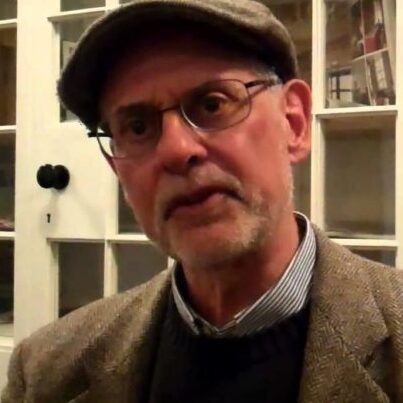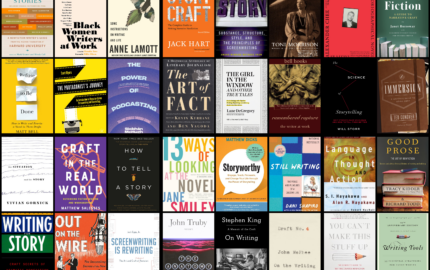EDITOR'S NOTE: The 2o19 Power of Narrative conference at Boston University was a full immersion into the craft, challenges and characters of story work. We are scrambling to mine as many of those riches as we can and share them here. We start with some sparkles of insight from a few of the breakout sessions, generously shared by conference attendees Madeline Bodin, Jill U. Adams and Caren Chesler. In coming days, we will offer insights from keynotes and, we hope, some links to full transcripts. We welcome your notes or captures from the conference. You can find other wisdom on the conference website, and on Twitter @narrativeBU.
Founder of the Atavist magazine and author of "The Mastermind"

"Report your way to empathy. If you can’t see the world through your subject’s eyes, the answer is more reporting.”
Triangulate information. Check several sources on what you're told to see if it holds up.
His reporting sometimes leaves him with information that can’t be independently verified. That problem comes along with interviewing, among other criminals, a hitman. As a former fact-checker, Ratliff’s strategy for gracefully including these facts is to show his work by becoming a character in his own story. This lets him write, “he told me,” or “he claimed. It’s a clever solution that could solve many other narrative journalism sourcing problems.
He uses Evernote to organize his notes.
Author of "The Family" and other empathetic portraits of unsympathetic people

How do you humanize a monster in your story without giving a platform to wickedness? Sharlet suggested a non-fiction poem as an example of how this can be done well, “The Colonel” by Carolyn Forché. Let your readers see the ears on the floor.
Sympathy means “I’m on your side.” Empathy is seeing the world through someone else’s eyes. It does not take a side. This is why we strive for empathy, not sympathy, in journalism. “Empathy is shape shifting. It’s unmooring. We abandon that what we know, to see for a time the view of another. You can have empathy for anyone. That is what makes empathy dangerous.”
Pulitzer Prize winning feature writer and editor of Nieman Storyboard

On curiosity: In an ideal world, we would be passionate and curious about every story we write. In the real world, our editors sometimes ask us to write about things that we have little innate passion for. If you are lack curiosity on a particular assignment, borrow it. Ask friends and colleagues for interview questions.
On critical thinking: Be wide-eyed but not naive. Listen for the lie, for the spin. Ask and ask until it makes sense. Ask, "How do you know? Where did you get your information?"
On creativity: Take creative risks: if it doesn't work, you can take it out. Start by writing little tiny scenes with characters. Learn to 'draw' stories. Try doing something from a different angle.
On courage: It takes emotional courage to bear witness to terrible things. Always ask the feared question, the necessary question (even if it seems rude), or questions that you fear will make you look stupid.
On interviewing: Before you interview, think about the purpose of your interview. Why are you doing it? What do you hope to gain? Explain the context and process of your interview to your source. Tell people what you want from an interview, how you got their name, whether you'll be talking to others, how you ask questions, how your fact-checking process works. Ask them if there’s anything they want to know.
Ask questions that put people in place, that allow you to report and write scenes as in a movie. Ask about time and place. Ask people to describe things. Use all the senses to inform your questions, including smell and touch. Ask to see photos. Instead of asking “How did you feel?" at a particular moment, ask: “Where were you? What did you say? What were you wearing? Who did you tell first?”
Don't ask 2-3 questions at once. Ask one at a time. Slow down. For every question you ask, ask five more. Give the person you're interviewing time to think things through.
Teacher, author and conference founder

When the interviews and observations are done, you have to create an experience on the page for your readers. “Voice” in writing is like a window pane. What do you want your readers to see — the subject of your article or your handiwork? It’s the choice between using a clear pane of glass and using green-tinted glass with maybe a clear peephole in it. There are virtues to both approaches, as the fancy handiwork of Tom Wolfe and Hunter S. Thompson shows.
Write 27 drafts. When you are done writing, it’s time to rewrite. Kramer said that we shouldn’t be called writers; we should be called revisers. A freelancer at the conference asked Kramer if he was being serious or flippant when he talked about doing 27 drafts of an article. Kramer said that he’s always a little flippant. But even a news brief benefits from a second draft. He can polish the 1,000-word features that are second nature to him in three or four drafts. But sometimes 27 drafts isn’t an exaggeration. That may help you get to the electrification draft, where everything comes alive. The implication is that the number of drafts you do is proportionate to your literary aspirations.
Go on a 'to be' diet: Put an active verb at the beginning of a sentence.
Write low on the ladder of abstraction. Be specific when describing things.
Write forward. Small tensions within a narrative arc can have their own propulsive power. He gave the example of a John McPhee essay on long-haul trucking, where you’re worried if a truck will run out of gas.
FULL DISCLOSURE FROM THE EDITOR: I did two breakout sessions and moderated a panel at the Power of Narrative conference. I did not ask the contributors to include me in their notes. I considered cutting them, but that might have been over editing.



